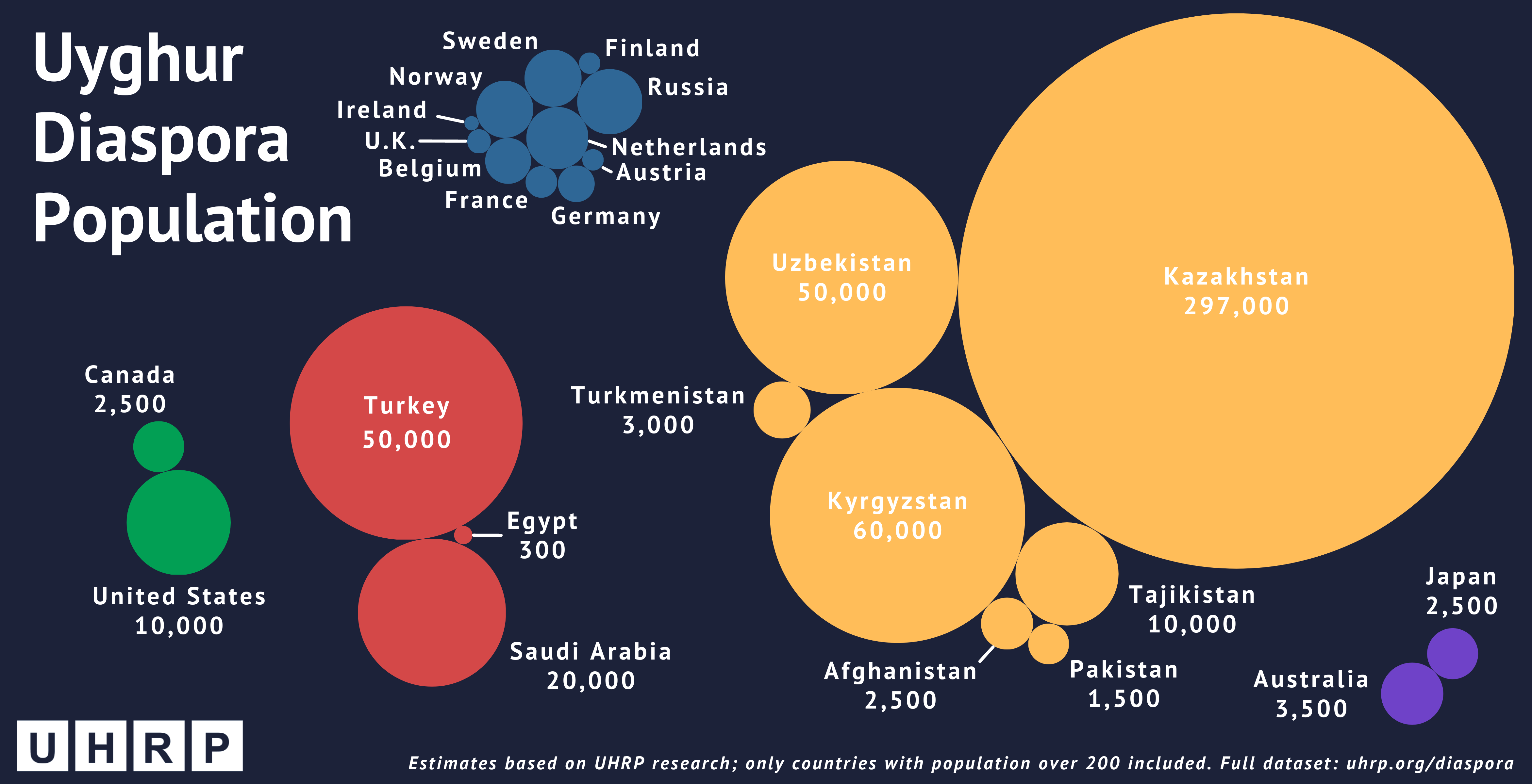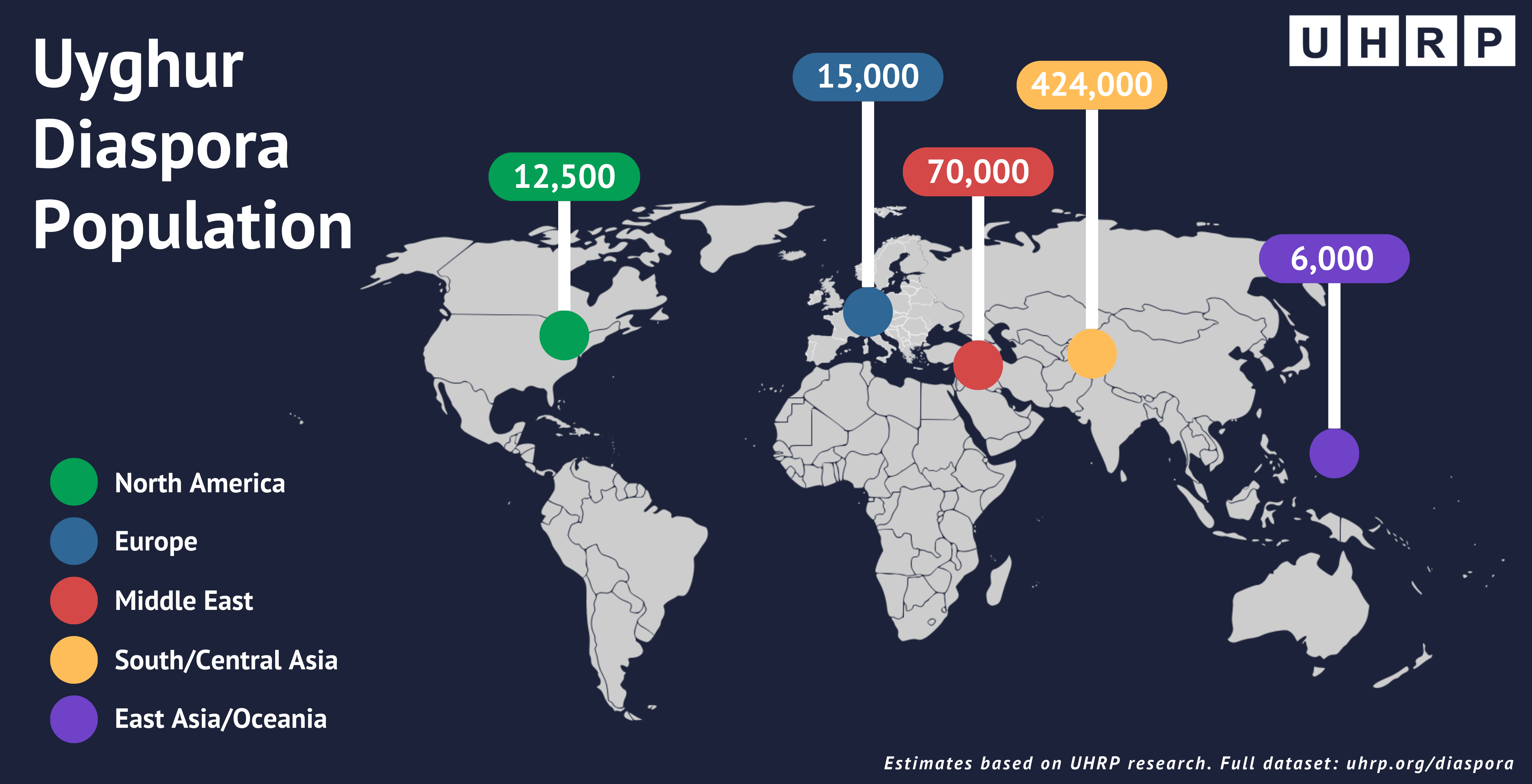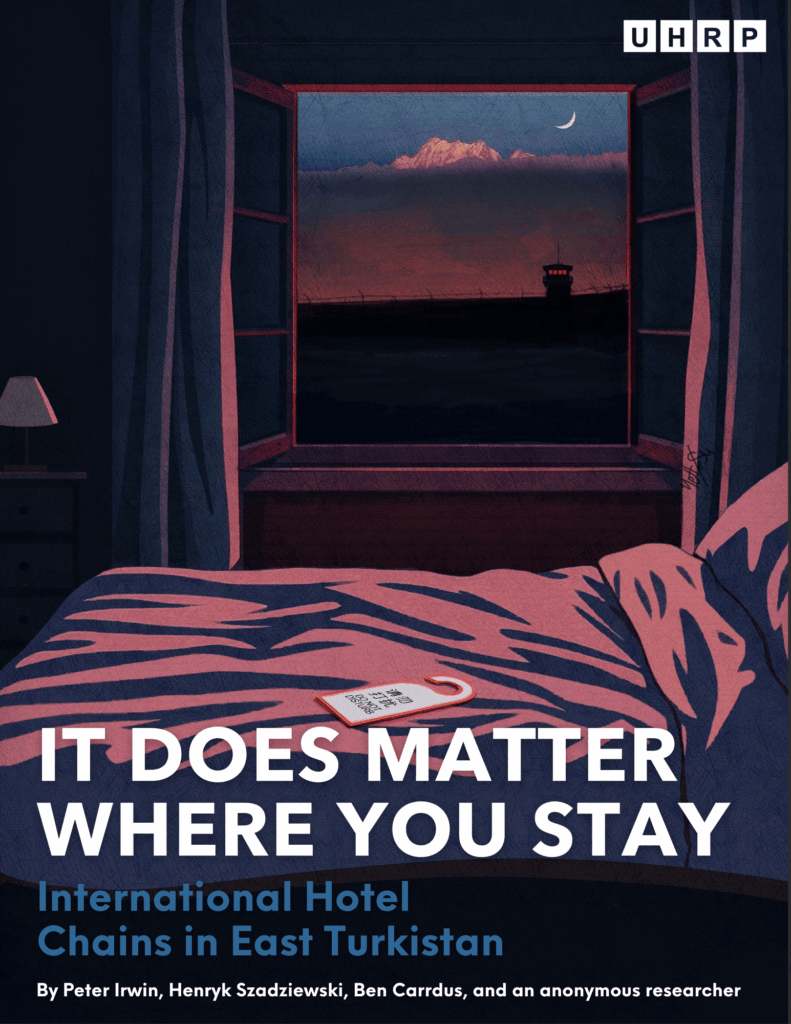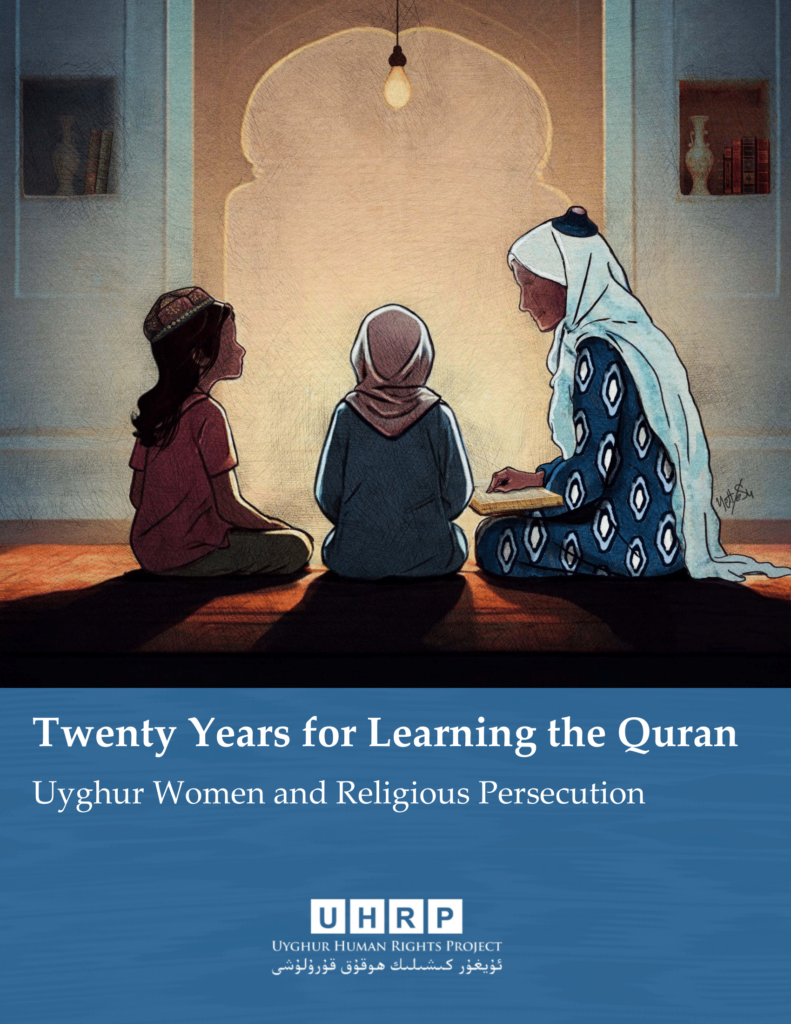A Uyghur Human Rights Project briefing by Peter Irwin. Read our press statement on the briefing.
Find citations and reference to this research in the Financial Times, AFP and Freedom House.

I. Summary
Uyghurs make up the plurality of East Turkistan’s inhabitants, numbering around 12 million, but increasingly find themselves living diasporic lives. Successive waves of Uyghurs have emigrated from their homeland or fled during periods of Chinese government repression over the last century.
Given significant limitations on access to information in East Turkistan, researchers have increasingly relied on Uyghur networks in the diaspora to better understand dynamics and trends on the ground.
Considering the near-total elimination of free expression and cultural practice in the Uyghur homeland, the Uyghur diaspora has worked to foster and strengthen cultural resilience abroad. These transnational efforts to sustain Uyghur culture and identity in the diaspora are even more necessary today given the bleak conditions on the ground.
In this short briefing, the Uyghur Human Rights Project (UHRP) maps the Uyghur diaspora around the world in order to better understand where Uyghurs have settled after fleeing or emigrating from China. Our research aims to aid researchers, journalists, civil society, and governments working in support of Uyghurs.
Uyghur culture and identity is contested, and often contingent upon the local context. This is particularly relevant in diasporic communities where new generations are influenced by local cultures and environments. Moreover, Uyghurs have become clear targets for transnational repression emanating from Beijing.
Relying on estimates from census data, community members, researchers, and other sources, we provide an estimate of the total population of Uyghurs living in various countries abroad; in some cases, we include an estimated population range.



II. Additional Notes
Several additional factors should also be taken into consideration when considering the data compiled in this briefing:
- We have chosen to identify Uyghur communities where possible, but it is almost certain that Uyghur individuals and families live in every corner of the globe. We have tried, therefore, to identify countries that host more than 10 Uyghurs, or where community members are known to the wider Uyghur community abroad.
- Ethnic identities are dynamic and contested, so any effort to “count” the number of any group will inevitably be a challenge. This is especially true in Central Asia, where Uyghurs have lived for decades, even centuries, across the present-day border areas between China and Kazakhstan, Kyrgyzstan, and Uzbekistan. In these countries in particular, Uyghurs have integrated with local populations for decades, especially considering that they share myriad cultural traits.
- Discrimination against non-nationals has been documented in Central Asia in particular, causing some Uyghurs to identify officially with the dominant ethnic group, especially in their relationship with the government. As a result, it is almost certain that census estimates in Central Asian countries undercount the number of Uyghurs residing there.
- Given migration patterns over time, the numbers will understandably shift, and UHRP will periodically reassess our estimates based on new information.

III. Population Statistics
| Continent | Country | Estimated Population |
| North America | Canada 🇨🇦 | 2,500 |
| United States 🇺🇸 | 10,000 | |
| Europe | Austria 🇦🇹 | 400 |
| Belgium 🇧🇪 | 2,000 | |
| Czechia 🇨🇿 | <50 | |
| Denmark 🇩🇰 | <50 | |
| Finland 🇫🇮 | 400 | |
| France 🇫🇷 | 1,000 | |
| Germany 🇩🇪 | 1,000–1,500 | |
| Ireland 🇮🇪 | 200 | |
| Italy 🇮🇹 | <50 | |
| Netherlands 🇳🇱 | 3,500 | |
| Norway 🇳🇴 | 3,000 | |
| Russia 🇷🇺 | 4,000 | |
| Spain 🇪🇸 | <50 | |
| Sweden 🇸🇪 | 3,000 | |
| Switzerland 🇨🇭 | 100–150 | |
| United Kingdom 🇬🇧 | 500–600 | |
| Middle East | Egypt 🇪🇬 | 300 |
| Saudi Arabia 🇸🇦 | 20,0001Evidence from community members in Saudi Arabia shows that there are almost certainly more Uyghurs in the country, but finding exact figures remains a challenge. | |
| Turkey 🇹🇷 | 50,000 | |
| United Arab Emirates 🇦🇪 | <50 | |
| Central/South Asia | Afghanistan 🇦🇫 | 2,000–3,000 |
| India 🇮🇳 | 100 | |
| Kazakhstan 🇰🇿 | 297,0002Updated from 290,000 on November 22, 2023. See bullet three in Section II. for more details | |
| Kyrgyzstan 🇰🇬 | 60,0003See bullet three in Section II. | |
| Pakistan 🇵🇰 | 1,500 | |
| Tajikistan 🇹🇯 | 10,000 | |
| Turkmenistan 🇹🇲 | 3,000 | |
| Uzbekistan 🇺🇿 | 50,0004See bullet three in Section II. | |
| East/Southeast Asia | Indonesia 🇮🇩 | <50 |
| Japan 🇯🇵 | 2,000–3,000 | |
| Malaysia 🇲🇾 | <50 | |
| Mongolia 🇲🇳 | <1,0005Mongolia’s 2020 census shows around 12,000 Khotons in the country, who some scholars have identified as Uyghurs who either migrated or were brought to western Mongolia in the middle of the 18th century. See Nyambuu, 1992: Mongolin ugsaatni züy: Udirtgal [Ethnography of Mongolia and the Mongols. An Introduction]. Ulaanbaatar. | |
| South Korea 🇰🇷 | <50 | |
| Taiwan 🇹🇼 | <50 | |
| Oceania | Australia 🇦🇺 | 3,000–4,000 |
| New Zealand 🇳🇿 | 75–100 |
FEATURED VIDEO
Atrocities Against Women in East Turkistan: Uyghur Women and Religious Persecution
Watch UHRP's event marking International Women’s Day with a discussion highlighting ongoing atrocities against Uyghur and other Turkic women in East Turkistan.




